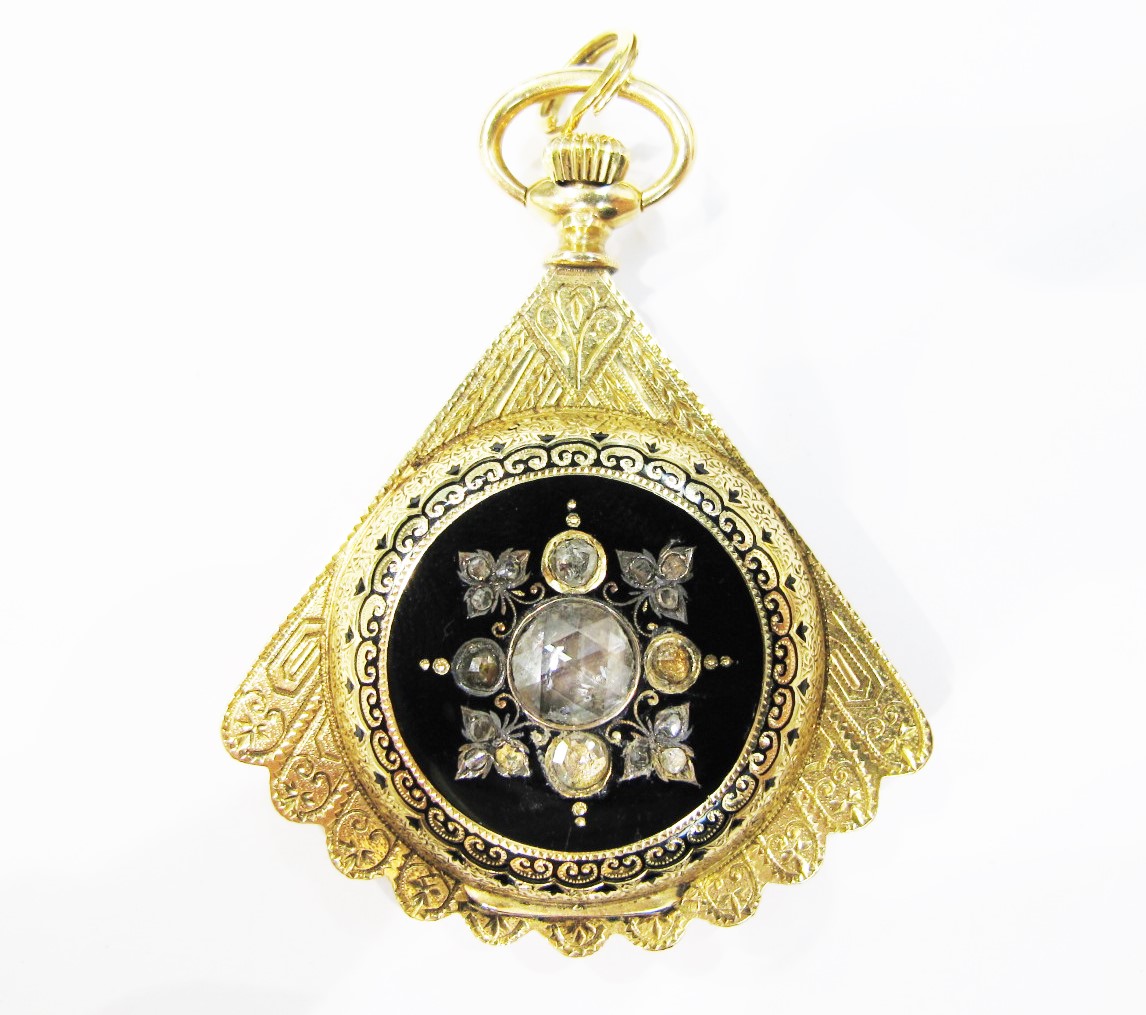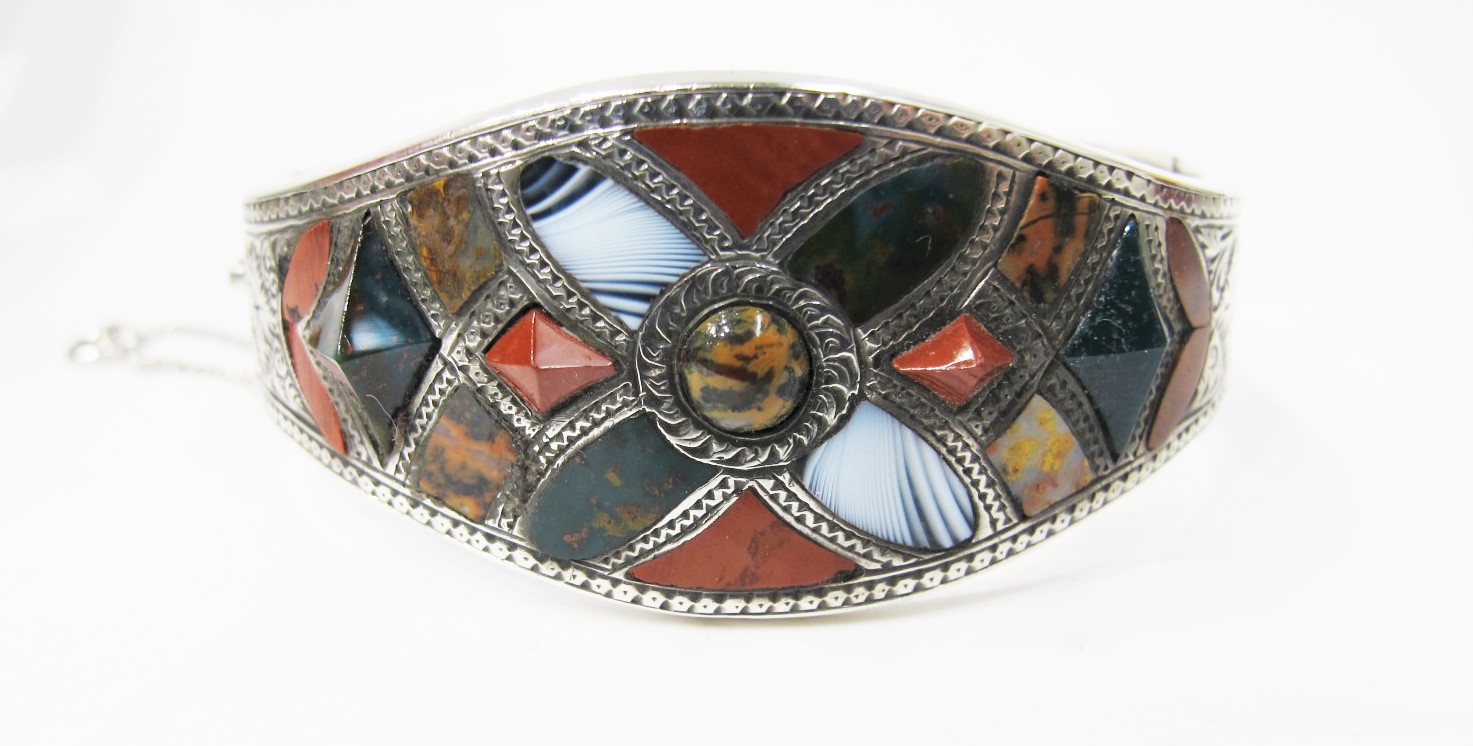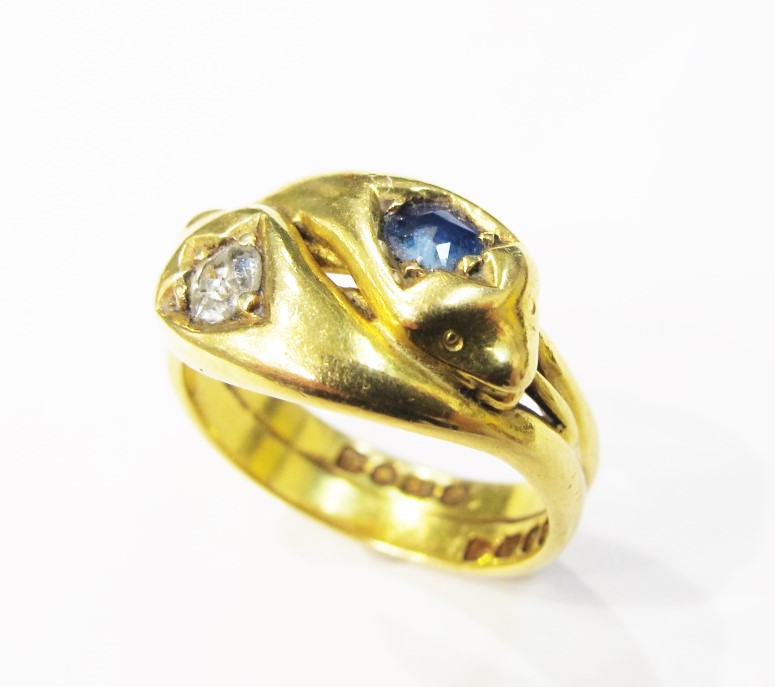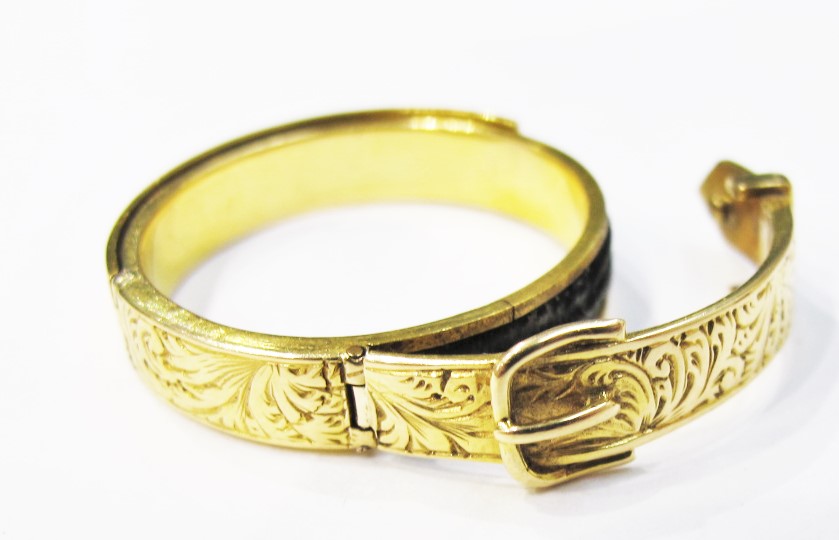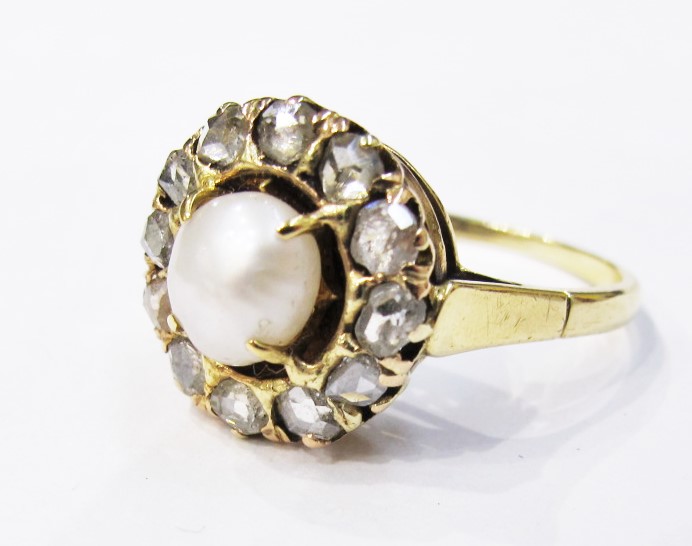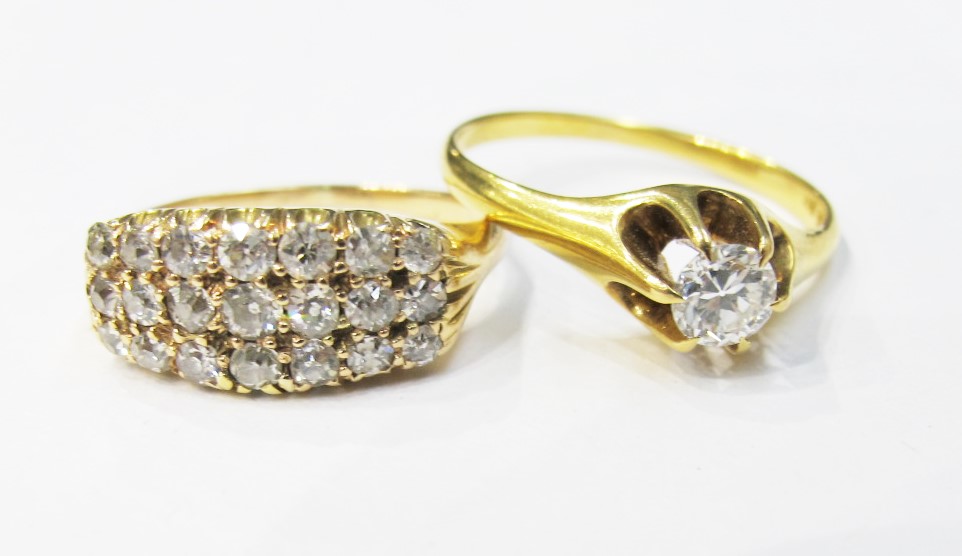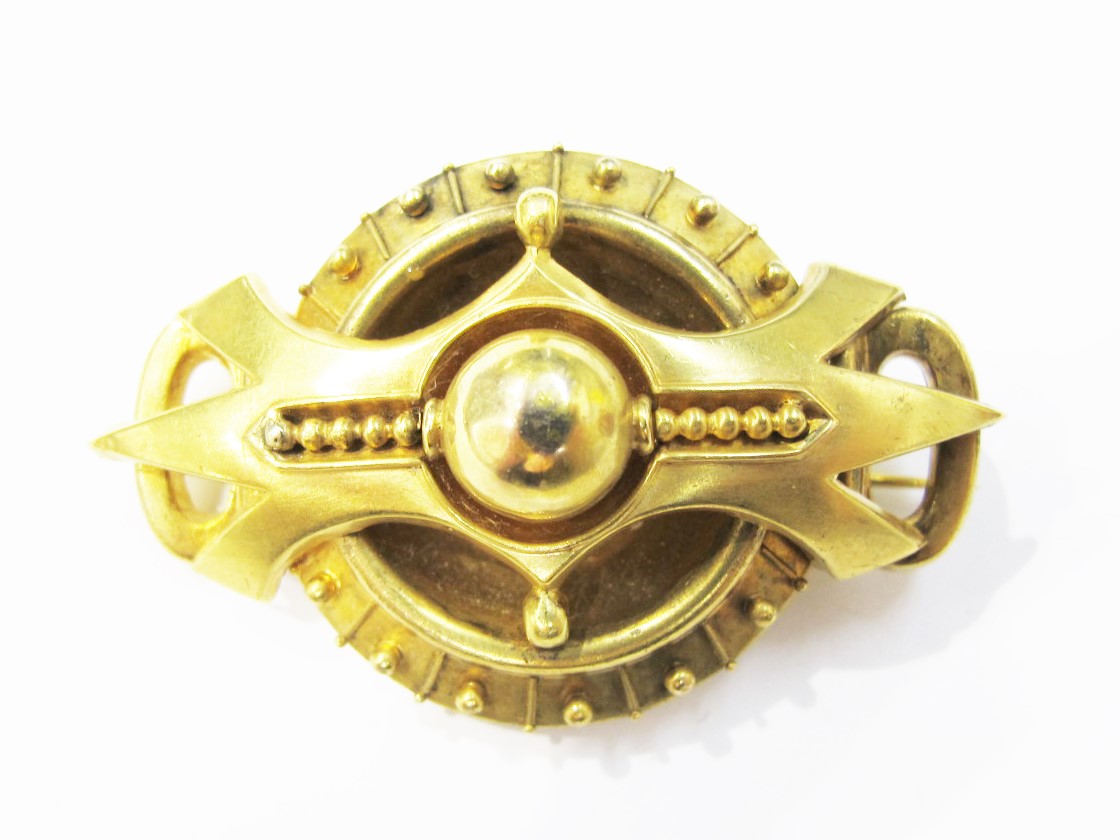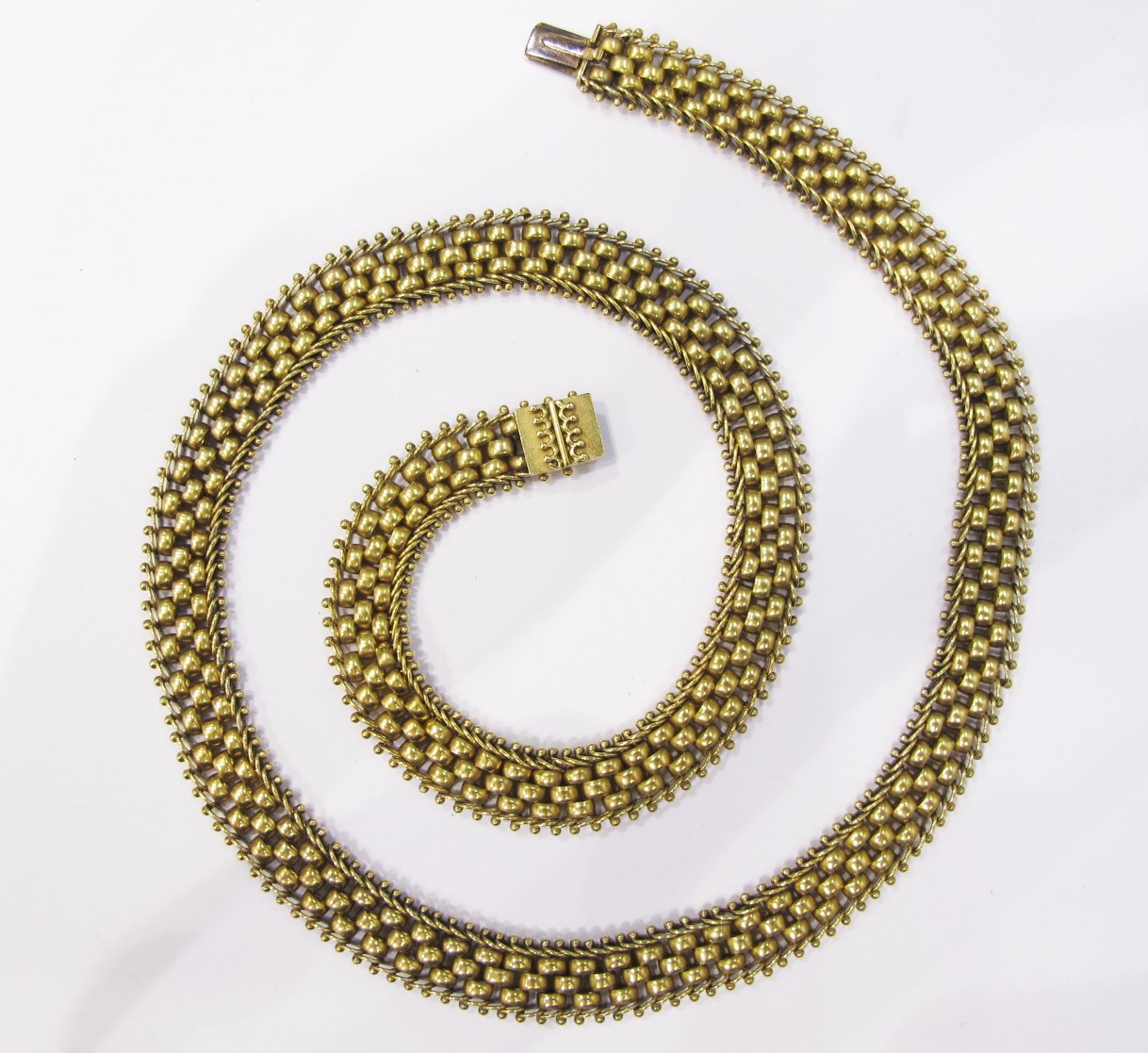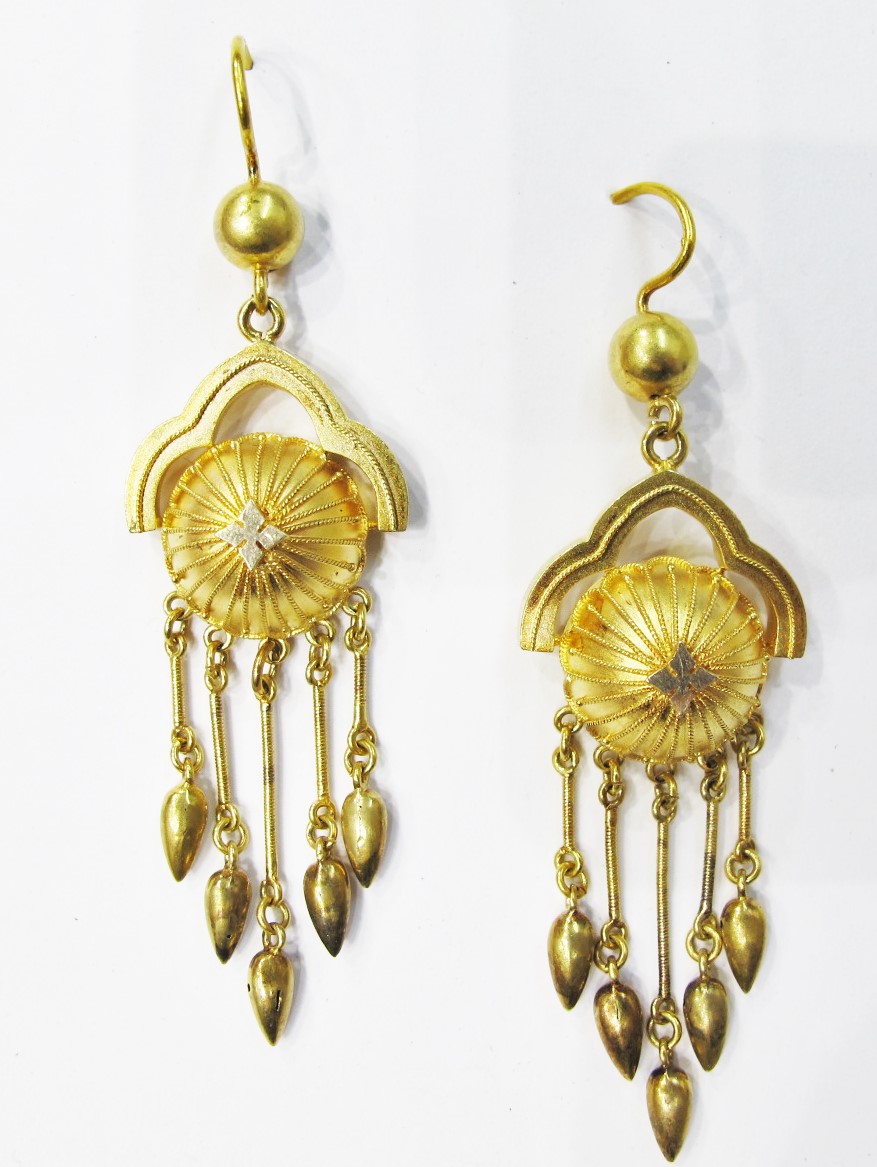On this day in 1901, Queen Victoria passed away after 63 eventful years as monarch of the British Empire. At Gray & Davis, one of our areas of expertise is the eclectic jewelry made during Victoria’s reign. Characterized by rich gold and silver, exotic gems and inventive design, here’s a few pieces from our collection that we think Victoria would be proud to lend her name to:
From top to bottom:
- Aesthetic style fan watch pendant with rose cut diamonds and black enamel, c. 1890
- Silver bangle with Scottish agate inlay, c. 1860
- 18k gold, sapphire & diamond double serpent band. London marks, 1896.
- Buckle locket ring with hair, 2nd half of 19th century
- Natural pearl with rose cut diamond surround, c. 1880
- Two gold and old European cut diamond rings, late 19th century
- Stunning gold brooch with applied gold beads, c. mid 19th century
- Victorian woven link chain with applied wirework clasp
- Impressive fringe earrings with twisted rope detail, c. 1870
All pieces currently available at Gray & Davis.

